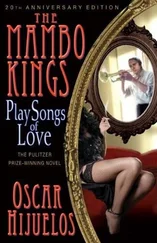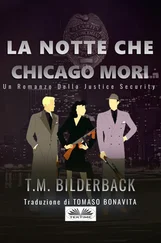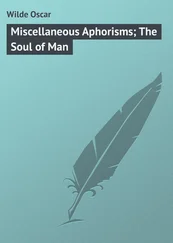From another of her verses, which was just a jotting entitled “Mi amiga Eliza”:
She wore rags like me
She was forlorn like me
Knew nothing like me
Had little like me
We look so much alike
That when I see her
In my mirror,
And ask, “Eliza, why the long face?”
She tells me, “Oh, cousin, it’s because
I know that while I am so happy
You are so sad.”
As much solace as beautiful María took in her verses, the source of her greatest pride in those years was Teresita, about whom she bragged to anyone who would listen. (“Oh, but if only your abuelos could have known-and your papito, Ignacio, whose brains flow in your blood-oh, they would be so happy!”) Teresita had always been one of those cubanitas who, with an exile’s passion, excelled in every subject in school, science being her greatest interest. She was helped by a very high IQ-a measurement that meant little to María. That she had decided to study medicine, all on scholarships, had surely to do with the way María had raised her. When it came to matters of health, a day never passed during Teresita’s early adolescence that María did not find herself worrying that her daughter might come down with the same symptoms of epilepsy that had taken her tía, at so young an age, from this world. Teresita had grown up hearing her mother, at the public health clinics, asking the doctors who examined her if there were special tests for that disease. Nothing came of them-she was always a healthy girl-but any time Teresita suffered from a fever and exhibited the slightest trembling, María, taken back to Pinar del Río and the sufferings of her sister, inevitably rushed her off to the nearest hospital. Early on, epilepsia was a word that Teresita had learned through her mother’s wistful stories about her aunt, may God bless her soul, just so that she would know something of her own past; and it was the first disease that Teresita, in high school, with a burgeoning interest in the sciences, looked up in the library encyclopedia.
And so, it can perhaps be said that Teresita’s interest in pediatric medicine came first to pass because of María.
OF COURSE, MOTHER AND DAUGHTER SPOKE ON THE TELEPHONE at least a few times a week, whenever Teresita’s taxing schedule as an intern in New York, with a specialization in pediatric oncology at the Columbia-Presbyterian Medical Center, allowed her the time.
“Have you met anyone?” María inevitably asked.
“No, I’m too busy, Mama. If you knew my hours, you’d understand.”
“But there’s no one there you like?”
Teresita sighed. “No, Mama, not yet.”
It was something María always asked her, and it always made Teresita want to get off the phone, or say, “Mama, can’t you just accept who I am?” But she knew that María would simply have thought, Oh, but she’s just become too americana. Still, their conversations jostled along pleasantly, and dutifully, Teresita filling her mother in on the routines of the week, and María occasionally reciting her latest verses over the phone, never once failing to let her daughter know how much she missed her. In fact, though Teresita often sighed during their conversations, she felt the same way. María, after all, had been everything to her, the fount of what she thought of as her “little Cuban-centric world.”
Always too pensive for her own good, and one of those demure and ever obedient cubanita daughters who always seemed to recede into the shadows of the kitchen when María had friends over and things became lively, Teresita, with her 160-something IQ, had, over the years, grown more attached to abstract notions than to the practicalities-and pleasures-of daily existence. In high school, when thrown in with a crowd of rowdy cubanita adolescents who mainly talked about one guapo boy or another, and fretted about whether their asses were too big or their halter tops were sexy enough, Teresita thought them frivolous. Among those friends she was known as somewhat of a wallflower, and so straitlaced that they would chide her with this taunt: “Hey, loosen up, Teresita! Do you think we’re back in the Cuba of our abuelos?” She went to high school dances, but never with any man-killing intentions and, to María’s chagrin, never bothering with makeup. A budding feminist, Teresita refused to wear the clinging, short-skirted dresses of her classmates. Competing on her high school swim team well enough to have once won a bronze medal in a regional meet, she always wore an old-fashioned one-piece suit which the coach claimed, aside from her tendency to suddenly put on weight, slowed her up.
And when María, off in her own world, spent the evening playing old Cuban records on their phonograph, often that Mambo Kings tune over and over again, Teresita, having a little cassette player, listened to the kind of music that would have made her friends gag. A high school music appreciation class, run by a progressive fellow, had “turned her on” to both Bach, Mozart, and Beethoven, and jazz. Not that she didn’t like Cuban music, but, having been raised on it, she had come to prefer just about anything else. And yes, she had been taught to dance Latin style by her mother, but there was something about the way her mother pushed her-“Be sexier, move your hips more!”-that put her off. Sweating in her leotard, Teresita would tell her, “Come on, Mama, you know that I’m not you!” And María, shaking her head, would say, “Oh, but I’m just trying to help you, chica.” Teresita knew this, but María worked her so hard sometimes, she couldn’t help but wonder if her mother was trying to put her through the paces of a professional dancer in Havana, 1947. (Well, she’d heard her mother talking about those days often enough, of a nightclub life, both sleazy and glamorous, to know that it surely wasn’t easy for her to have navigated that predatory world. And she’d feel grateful that she had been spared all the difficulties María, as she often reminded her, had endured. Yet, when she’d look at herself in the floor-to-ceiling studio mirror, Teresita, neither as beautiful nor as long-legged as her mother must surely have been at her age, just wanted to run out of that place and head home, to her room and the companionship of books.)
So she was a solitary sort. Whereas other cubanitas of her age would look back at the drudgery of their high school studies and prefer to remember their various novios-even Teresita noticed how some of those boys swaggered along the halls with erections bunched up in the fronts of their tight jeans-she, in those years, had only one sort of boyfriend, another brainy cubano exilio, whom she had met in a chemistry lab. Rolando wasn’t bad looking-in fact, at first glance, he was handsome enough, with Elvis sideburns and expressive brows and eyes-but his face was a mess of luridly green, white-topped pimples, which prevented him from thinking he could ever look good. He blamed these outbreaks on the constant pressures that his demanding parents put on him to excel in school. (This she almost envied; María hardly ever bothered to ask Teresita about her studíes.) Nevertheless, it was his general melancholy-shades of María-and his self-effacing ways, that touched Teresita’s heart, and while they never became a couple, meeting here and there in the malls, where they’d find a secluded spot to furtively kiss, she owed her first sexual experience to him. This took place in the bedroom of her house one afternoon while María was off at her dance studio: his trembling hands slipping inside her blouse and caressing the plumpness of her breasts, her nipples (shades of María) shooting up and hardening at his touch, and then, as good as losing her virginity, Teresita let him ease his fingers into her panties, where, feeling him fooling around, she came. In kind, to put it in the most unscientific language, in the midst of a longish kiss, she jerked him off. But that was about all. They went out for a while until Rolando, confusing that afternoon’s frolic with love, not only took to calling her every day but began to behave so mawkishly around her at school that Teresita, finding him bothersome and too much of a distraction from her studies, just had to cut him loose.
Читать дальше












